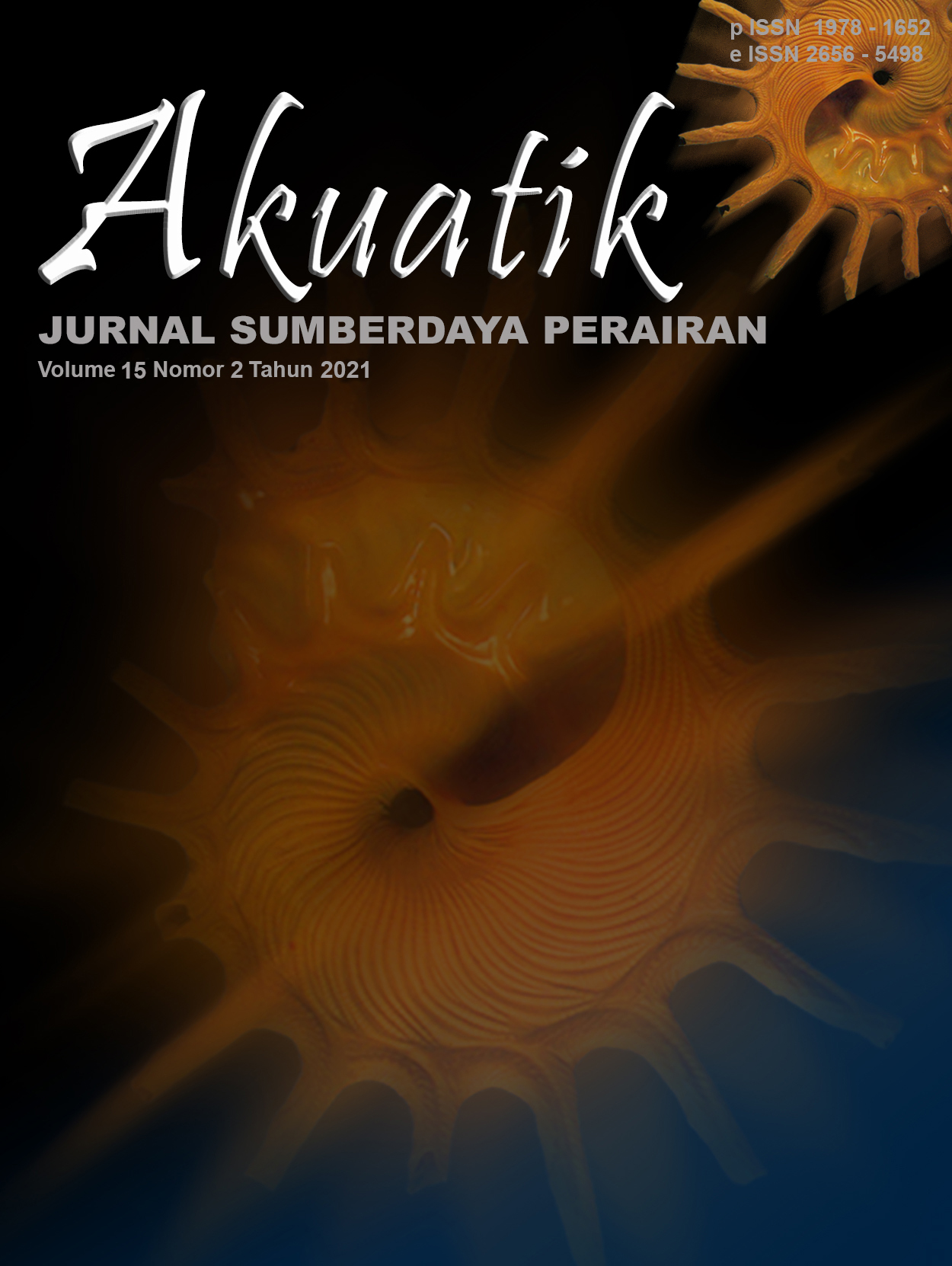Biomassa Dan Estimasi Karbon Pada Ekosistem Lamun Di Pantai Tanjung Kerasak, Kabupaten Bangka Selatan
Biomass And Carbon Estimation In Seagrass Ecosystems On Tanjung Kerasak Beach, South Bangka Regency
Abstract
Tanjung Kerasak Beach is one of the areas in South Bangka that has the potential for seagrass ecosystems Seagrass ecosystems have an important role for ecosystems, one of which is as a carbon sink and storing it as organic matter for a long time. This study aims to analyze the type and cover of seagrass and analyze the biomass value and carbon stock of seagrass in Tanjung Kerasak Beach, South Bangka Regency. This research was conducted in March 2021 at Tanjung Kerasak Beach, South Bangka. Data collection consists of 3 stations, where each station consists of 3 substations. Carbon analysis was carried out using the Loss on Ignition (LOI) method and the seagrass biomass was obtained by multiplying the dry weight of the seagrass shoots by the density of the seagrass. The results of the study found 5 species of seagrass consisting of 2 family. The highest seagrass cover was at station 2 of 26,36%, while the lowest was at station 3 of 13,26%. The condition of seagrass cover at Tanjung Kerasak Beach is categorized as poor. The low seagrass cover is thought to be due to several factors, one of which is pressure from human activities. The highest seagrass biomass was found at station 2 of 236 gwd/m2 and the lowest was at station 3 of 64,16 gwd/m2 . The estimated carbon stock of seagrass ecosystems in Tanjung Kerasak Beach is 1,1 tonC/ha. Carbon stocks stored in seagrass ecosystems can be influenced by the area of seagrass beds
Downloads
Copyright (c) 2021 Sartini Sartini, Sudirman Adibrata, Siti Aisyah

This work is licensed under a Creative Commons Attribution-ShareAlike 4.0 International License.







